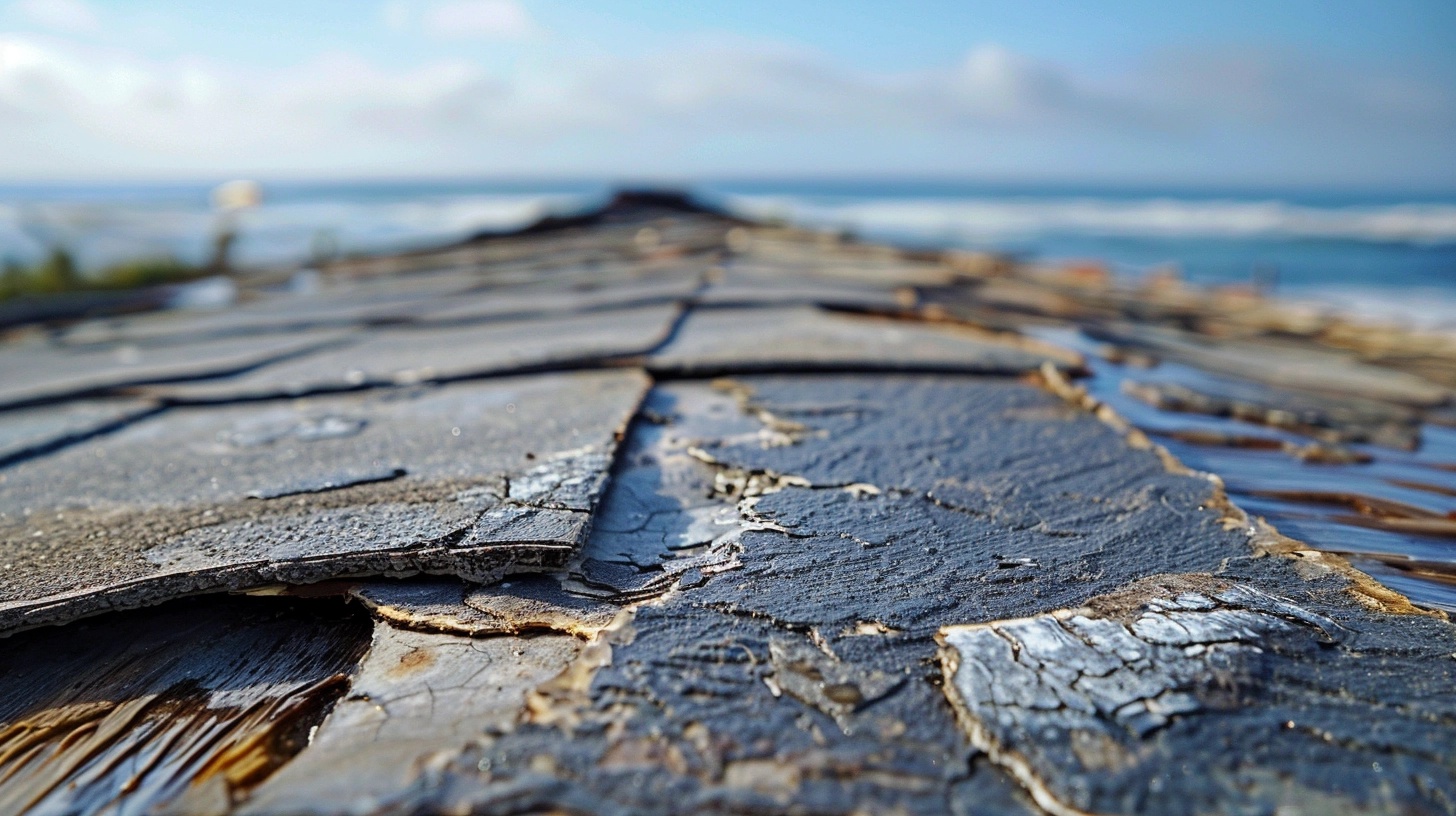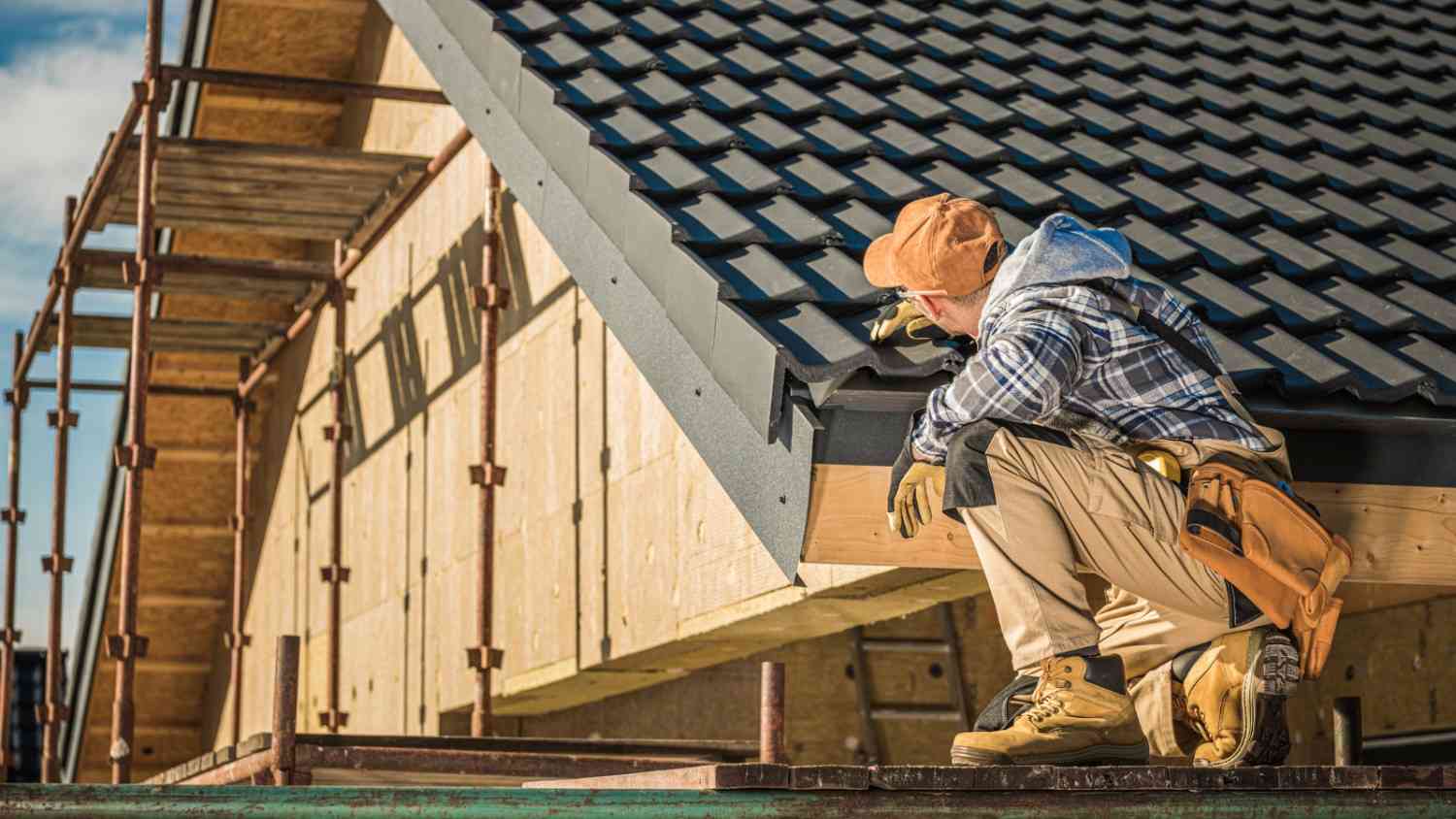Postponing roof repairs in coastal Orange County exposes your home to accelerated salt air corrosion, structural weakening, and dangerous mold growth. You’ll face higher energy bills as damaged roofing creates thermal bridges, allowing up to 40% energy loss. Warning signs include white crystalline deposits, premature rusting, and water stains in your attic. Regular seasonal inspections can identify these issues before they escalate into costly structural repairs or health hazards. The true cost of delay extends far beyond your rooftop.
Salt Air Corrosion: How Coastal Elements Accelerate Damage
While many homeowners focus on visible roof damage from storms or falling debris, the silent threat of salt air corrosion often goes unnoticed until significant deterioration has occurred. Living in coastal Orange County means your roof faces constant exposure to salt-laden ocean breezes that accelerate wear on metal components.
Salt air doesn’t just affect metal flashings and fasteners; it creates corrosion effects that compromise your entire roofing system. You’ll notice this damage as rusted nails, deteriorating metal valleys, and weakened structural connections. When these elements fail, water finds entry points, leading to leaks and internal damage.
Don’t wait for visible signs, by then, the damage requires costly repairs. Advanced leak detection technologies can identify early salt corrosion before it compromises your roof’s integrity, potentially saving you thousands in premature replacement costs.
Beyond The Surface: Structural Integrity At Risk
Although visible roof damage may catch your immediate attention, the hidden threats beneath the surface often pose far greater risks to your home’s structural integrity. What you can’t see might ultimately compromise your entire house’s foundation.
| Unseen Danger | Potential Consequence |
|---|---|
| Weakened rafters | Roof collapse risk |
| Moisture in attic | Mold proliferation |
| Compromised insulation | Energy efficiency loss |
| Electrical hazards | Fire risk |
| Ceiling damage | Interior structural failure |
Regular structural assessments reveal these concealed issues before they become catastrophic. You’ll find that professional integrity checks can identify deteriorating support beams, water intrusion pathways, and load-bearing weaknesses not visible during casual inspection. Understanding common roof problems and signs of damage helps you recognize these warning signals early. Don’t wait until your ceiling sags or walls crack, these are late-stage indicators of problems that began months or years earlier in your roofing system.
The Mold Factor: Health Hazards Lurking In Your Attic
Those structural dangers don’t just threaten your home’s physical integrity, they create perfect conditions for a silent health threat: mold. When water infiltrates through damaged roofing, your attic becomes a breeding ground for mold growth. Poor attic ventilation compounds this problem, trapping moisture and creating the humid environment mold thrives in.
The health impacts can be severe:
- Respiratory issues including coughing, wheezing, and aggravated asthma symptoms
- Allergic reactions ranging from itchy eyes to serious skin irritations
- Long-term exposure risks that can lead to chronic conditions and compromised immune function
You can’t always see or smell these infestations until they’ve spread extensively. By then, remediation costs often exceed what you’d have paid for timely roof repairs, while your family’s health has already been compromised.
Energy Efficiency Impact: When Your Roof Leaks Money
Beyond the structural damage and health hazards, a deteriorating roof silently drains your wallet through wasted energy. Roof leaks and damaged shingles create thermal bridges where your heated or cooled air escapes, forcing HVAC systems to work harder.
| Energy Issue | Financial Impact | Solution |
|---|---|---|
| Air leakage | 10-40% higher bills | Proper sealing |
| Poor insulation | Wasted heating/cooling | Insulation upgrades |
| UV damage | Reduced roof lifespan | Reflective coatings |
An energy audit can identify these invisible money drains before they worsen. The audit pinpoints exactly where your roof system falters, allowing targeted repairs instead of costly full replacements. In coastal Orange County’s climate, these efficiency improvements typically pay for themselves within 1-3 years through reduced utility costs.
Santa Ana Winds: How Minor Damage Becomes Major During Wind Events
While many Orange County homeowners underestimate minor roof damage, the notorious Santa Ana winds transform these small issues into catastrophic failures. When these seasonal winds sweep through with gusts exceeding 70 mph, your roof’s vulnerabilities become immediate threats.
Implementing wind resistance strategies before damage occurs is essential:
- Secure loose shingles immediately – even one compromised shingle creates a wind-catch point that can peel back entire sections
- Reinforce roof edges and corners – these areas experience the highest wind uplift forces
- Clear debris regularly – branches and leaves become projectiles during wind events
For emergency repair tips, keep tarps, roofing cement, and replacement shingles on hand. You’ll want to address damage quickly before the next wind event compounds the problem and compromises your home’s structural integrity.
The Real Cost Analysis: Repair Now vs. Replace Later
Homeowners who postpone minor roof repairs often face a costly financial equation they didn’t anticipate. When you delay addressing a $500 shingle repair, you’re fundamentally signing up for potential structural damage that could escalate into a $15,000+ full roof replacement.
The math is straightforward: immediate repair costs might seem burdensome now, but they deliver significant long-term savings. A typical roof inspection and minor repair in Orange County ranges from $300-$700, while complete replacements start at $10,000 and quickly climb with added water damage restoration. Our budget-friendly advice from Orange County roof repair experts can help you make these critical financial decisions.
You’re not just saving money by acting quickly, you’re protecting your home’s market value. Every year of neglect typically increases your eventual expense by 15-25%, turning procrastination into one of the most expensive financial decisions you’ll make. When facing this decision, comparing spot repairs vs. section replacement helps determine the most cost-effective approach.
Warning Signs Coastal Homeowners Often Miss
Coastal homeowners can’t afford to overlook the telltale signs of salt damage, which often appears as white crystalline deposits along roof edges and unusually rapid metal corrosion. You’ll want to regularly check your attic’s interior walls and ceiling for brownish water stains, which indicate moisture has already penetrated your roofing system. These early warning signals, if addressed promptly, can save you thousands in structural repairs that become inevitable once saltwater infiltration compromises your home’s integrity.
Salt Damage Indicators
Living near the ocean provides stunning views and invigorating breezes, but it also exposes your roof to persistent salt damage that silently deteriorates its integrity. Salt accumulation effects accelerate aging in roofing materials, creating problems you’ll need to address before they worsen.
Watch for these critical salt damage indicators:
- White crystalline deposits along flashing and metal components – these salt residues actively attract moisture
- Premature rusting of metal fasteners, especially in valleys and around vents
- Granule loss on asphalt shingles, leaving dark, patchy areas vulnerable to UV damage
Implementing corrosion prevention strategies early saves thousands in future repairs. Inspect your roof quarterly for these warning signs, as salt damage progresses rapidly once it begins. Unlike inland homes, your coastal property requires specialized maintenance to combat continuous salt exposure.
Moisture Detection Points
While salt accumulation presents visible evidence of coastal damage, moisture infiltration often works invisibly until significant structural harm occurs. You’ll need to identify key detection points throughout your home to catch problems early.
Check ceiling corners for discoloration, which indicates water movement behind walls. Inspect your attic after rainfall, looking for dampness along beams where roof leaks typically manifest initially. Modern moisture mapping techniques allow professionals to trace water pathways without invasive procedures.
Don’t overlook unusual musty odors in upper rooms, these often signal moisture trapped in insulation. Watch for paint bubbling near chimneys and vents, common entry points for water. Advanced detection technology can now identify moisture content in materials before visible damage appears, saving thousands in potential structural repairs.
Proactive Maintenance: Creating A Seasonal Inspection Schedule
To prevent costly roof damage, establishing a seasonal inspection schedule is one of the most effective strategies homeowners can implement. By creating a maintenance calendar specifically tailored to Orange County’s coastal climate, you’ll stay ahead of potential problems before they escalate into major repairs.
Your seasonal checklist should include:
- Spring inspection – Check for winter damage, clean gutters, and inspect for moss growth common during humid spring months
- Summer assessment – Examine for UV damage, cracked sealants, and signs of expansion from heat
- Fall preparation – Clear debris, inspect flashings, and secure loose materials before winter storms arrive
Don’t wait for leaks to appear before examining your roof. Regular inspections help you identify minor issues while they’re still manageable and affordable to address. For professional service in your area, our Huntington Beach roofing team provides comprehensive coastal property maintenance.
Frequently Asked Questions
Does Homeowners Insurance Cover Roof Repairs From Salt Air Damage?
Most homeowners insurance policies don’t cover roof damage from salt air since it’s considered gradual deterioration. You’ll need to check your specific policy, as some coastal-area insurers offer specialized coverage for this type of damage.
How Quickly Can Emergency Roof Repairs Be Completed During Storm Season?
During storm season, you’ll typically see emergency repairs completed within 24-72 hours, depending on damage severity and crew availability. It’s why storm preparedness matters, established repair timelines help protect your home when you’re most vulnerable.
Are Certain Roofing Materials Better Suited for Coastal Orange County Homes?
Yes, you’ll find clay tiles, slate, and metal roofing materials perform exceptionally well in Orange County’s coastal climate. They resist salt corrosion, withstand high winds, and offer longevity despite constant exposure to marine elements.
Can DIY Temporary Repairs Prevent Further Damage Until Professionals Arrive?
You can apply temporary fixes like tarps or sealants as emergency measures, but they’re only short-term solutions. For guidance on when to call professionals, review our professional roof repair advice in California. These DIY repairs might slow water infiltration until professionals arrive, but won’t solve underlying issues completely.
What Financing Options Are Available for Major Roof Replacements?
You’ll find specialized roofing loans through banks or credit unions, manufacturer financing programs, contractor payment plans, home equity options, and credit cards. Most reputable roofers offer flexible payment arrangements to make replacements affordable. When you need a trusted Truecraft Construction partner for financing options and quality workmanship, we provide comprehensive solutions for Orange County homeowners.



